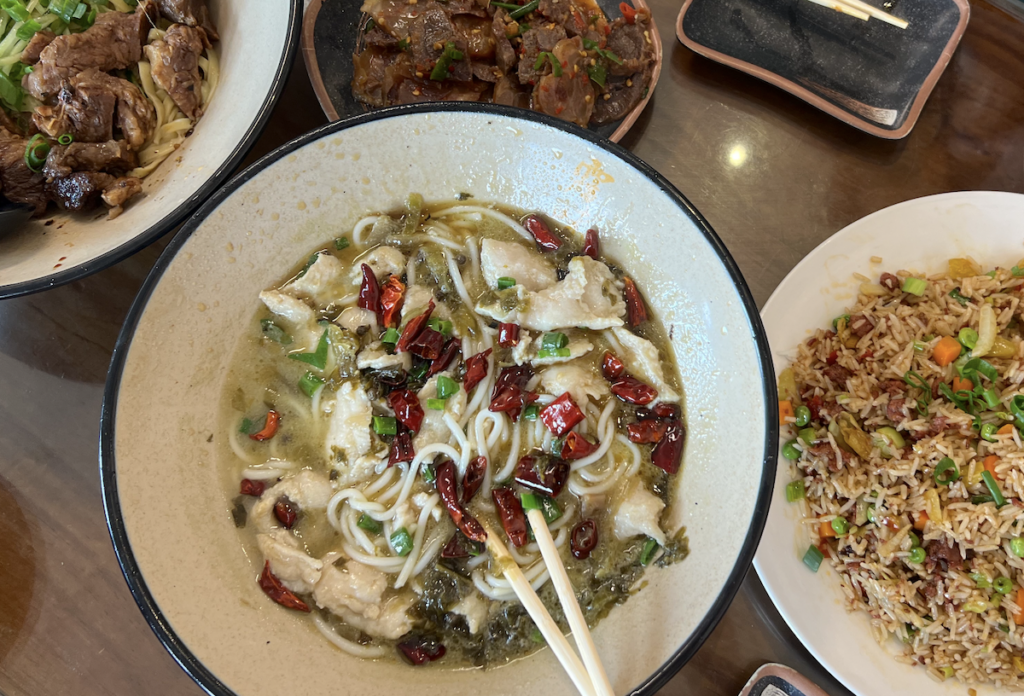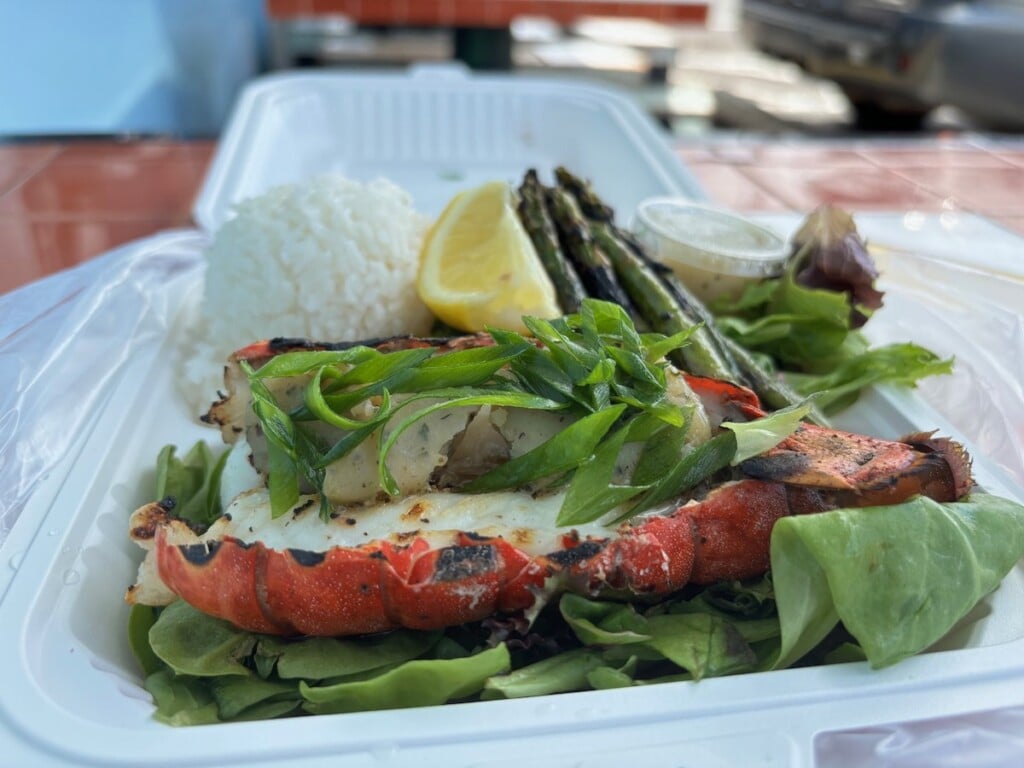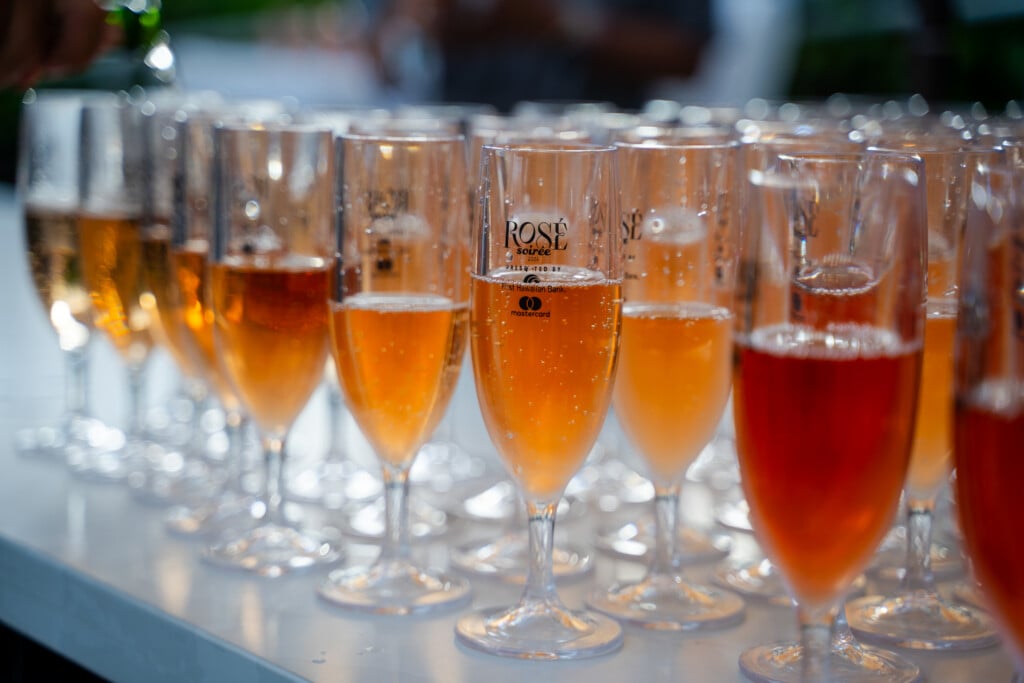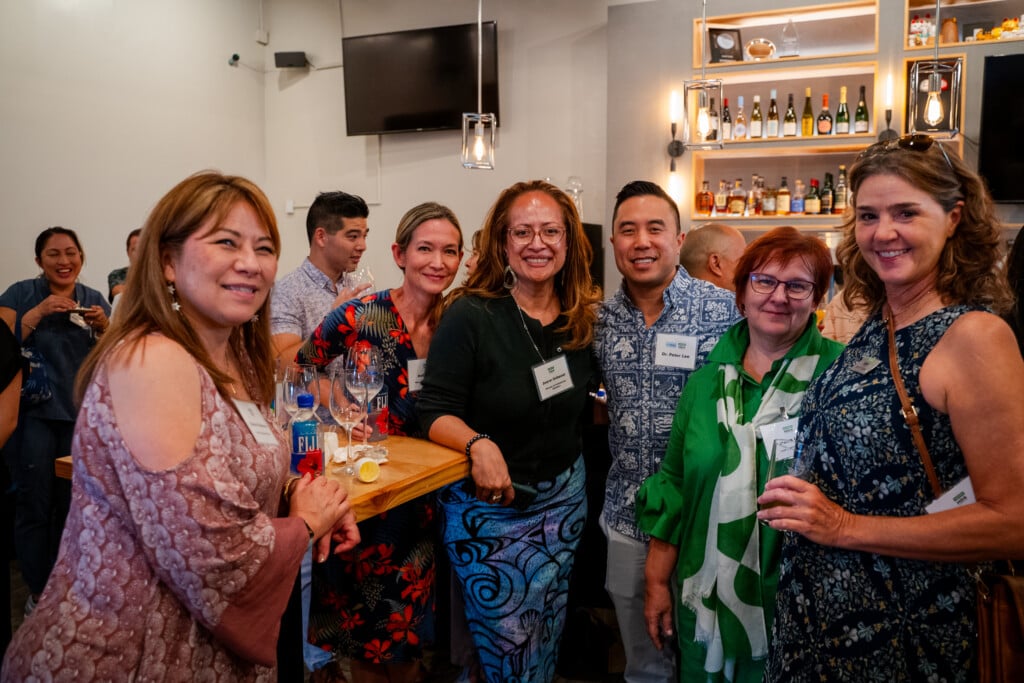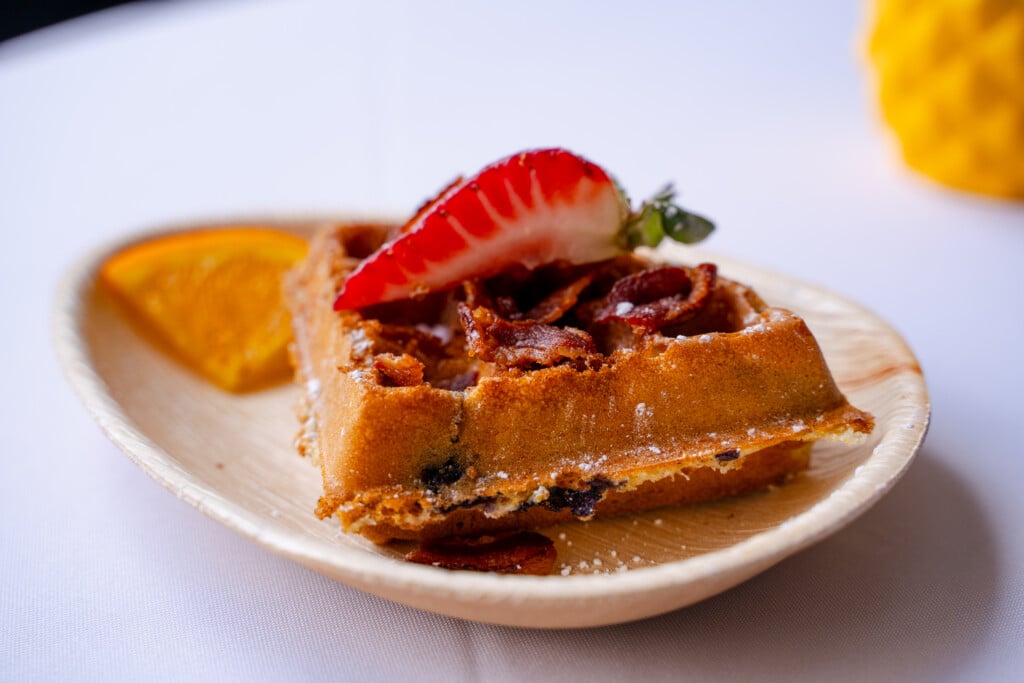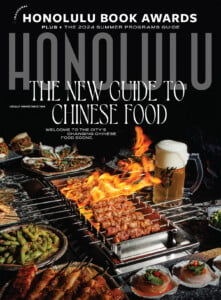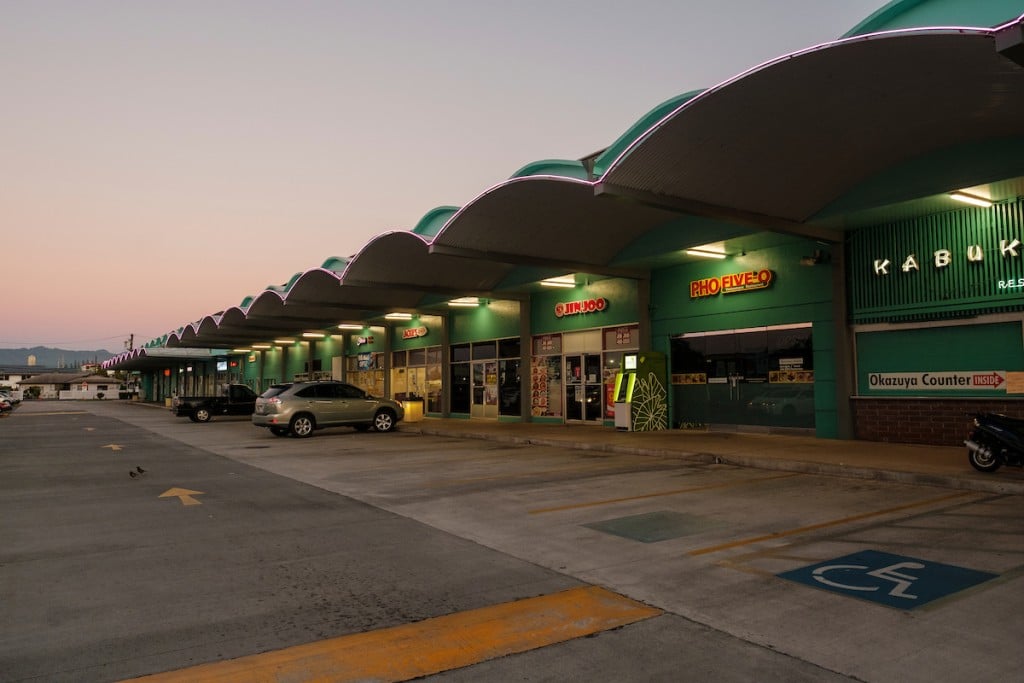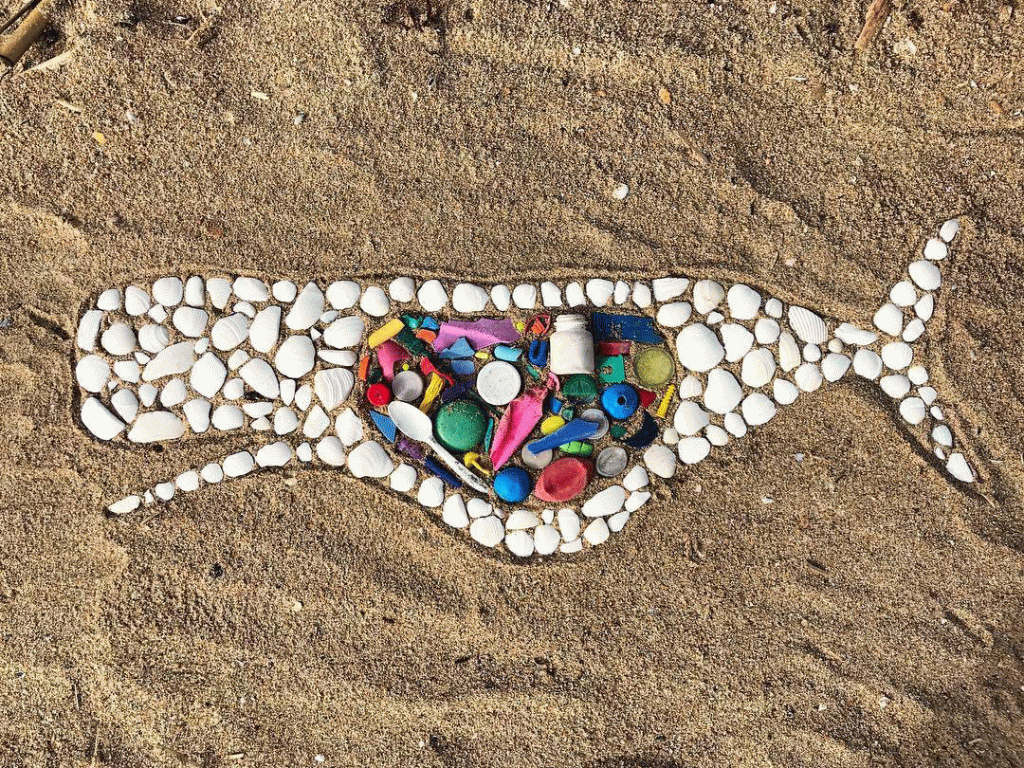Noodle Tuesday: 8 Old School Saimin Shops
Seeking out saimin on O‘ahu.

Jane’s Fountain. Photo: Lorin Eleni Gill
Saimin isn’t just a dish. It’s a Hawai‘i experience. It tends to taste best in a hidden mom-and-pop shop, where a toddler leans over his booth to check out the next table’s soup bowl, and tūtū teach their grandchildren how to use their chopsticks properly. The old school saimin shops seem to exist solely for the community, and with each passing generation, it’s like nothing has changed. You’re sitting in the same place it was decades ago. As you sip the hot broth straight from the bowl, it warms your hands, belly and heart.
Unfortunately, many favorite local haunts are disappearing, so we did a round-up of our favorite historic saimin shops on O‘ahu for those seeking a taste of old Hawai‘i.
Jane’s Fountain
History: If you’re looking for a blast to the past, Jane’s Fountain in Liliha is your spot. Waitress Karen Kan says that it’s been open for nearly 65 years now. A wave of nostalgia washes over you as soon as you set foot inside. Maybe it’s the faded original neon sign, vintage Coca-Cola machine, orange vinyl booths, classic cash-register, or the juke-box. Play two songs for just 25 cents—“Tiny Bubbles,” “Honolulu City Lights” or “Sukiyaki” to name a few. The original Jane retired four years ago, but the place hasn’t changed one bit.
Broth: Shrimp base made from scratch. Light and not too salty.
Noodles: Supplied by Sun Noodle Company down the road in Kalihi.
Try: Ask for extra veggies and char siu with your large saimin. Be aware—it comes with lots of luncheon meat rather than Spam. “I’ve been coming here for 40 years,” says regular customer Steven Johnston. “I come from the other side of the mountain just for this saimin. The noodles and broth make all the difference.” Customers also recommend the cheeseburger deluxe, at the practically old-school price of $3.95.
1719 Liliha St., (808) 533-1238
SEE ALSO: Papa Kurt’s Is Honolulu’s New Old-Fashioned Saimin Stand
Shiro’s Saimin Haven

Shiro’s Saimin Haven. Photo: Lorin Eleni Gill
History: Shiro’s was opened in 1969 by Shiro Matsuo, and has expanded to three locations on O‘ahu. Named “Hawai‘i’s Statesman of Goodwill” in 2003, Matsuo’s quotes line the walls of the restaurant, offering life guidance and fun reading as you wait for your meal. The first one at the Waimalu location explains the great customer service: “Dear Hearts, we don’t argue ‘cause we’d rather cook than fight.” Some employees have worked there for up to 40 years.
Broth: This broth has neither shrimp, beef, nor chicken. Waimalu location manager Bryce Fujimoto says there is a little bit of clam base and bonito, but the rest is secret! Shiro’s original recipes remain intact. The dashi is light and reminiscent of Japanese ozoni soup for New Year’s.
Noodles: Made from scratch at Shiro’s factory on Dillingham Boulevard and distributed to the three locations daily.
Try: Can’t choose just one bowl from the 65 options? Try the Dodonpa. “It’s got everything but the kitchen sink in there!” says Fujimoto. You can substitute original dashi for Hot and Spicy or Miso. For dessert, taste the mango ice cream topped with shoyu—a surprisingly delightful sweet-salty combination that will leave your tongue tingling and hankering for another spoonful.
Multiple locations, shirossaimin.com
Shige’s Saimin

Shige’s Saimin. Photo: Lorin Eleni Gill
History: Shige’s in Wahiawā is almost always packed on weekends. Ross Shigeoka opened the shop in 1990, inspired by his grandparents’ Hale‘iwa saimin stand of the 1950s. A collection of Japanese lucky cats sit above the bar and wave to customers as they come and go.
Broth: A flavorful but not overpowering mixture of shrimp and beef stock. Spice it to your own taste with mustard or chili sauce of choice.
Noodles: Noodles are made fresh daily with the Shigeoka family’s vintage 1950s machine and it shows. They’re a little flatter, whiter, and slightly spongy, effortlessly soaking up the broth (which leans salty).
Try: A large wonton min with veggies. It’s a nice mixture of different textures and colors, the yellow of the egg, pink of the kamaboko, and green of the tender cabbage and green onion. They’re generous with garnishes, and the wonton wrappers are thick and chewy. The fresh noodles are slurp-worthy after a long day at the beach on the North Shore. Teri burgers are also popular.
70 Kukui St., Suite 108, Wahiawā, (808) 621-3621
The Old Saimin House

The Old Saimin House. Photo: Lorin Eleni Gill
History: The Old Saimin House was opened in 1963 by Okinawan nisei Tomizo and Mitsue Ikei in the 1923 Young Hee Building. It moved to North King Street in the early 1990s, but the shop has stayed in the family and is now run by their grandson, Lane Ike. You’ll likely run into loyal customers from the old location. “I’ve come here since I was a kid,” says Theresa, a lunchtime regular. “I went to the original location. It’s comfort food—I’d have it once or twice a week growing up.”
Broth: The stock is made with baby shrimp, and pork, carrots, onions, and more. “We serve it just like how we did back then. We keep it classic with pure and fresh ingredients,” says longtime employee Ryan Nakandakari.
Noodles: Eagle Noodle Factory, a 33-year-old factory on Gulick Avenue. According to owner Miriam Lee, Eagle is the only place in town that makes these noodles—the recipe handed down to her by another saimin factory down the street that closed years ago. Unfortunately, the factory is currently up for sale.
Try: The small wonton min is more than enough. You’ll get a huge serving of noodles with your saimin, so it might be in your best interest to order more garnishes for just 50 cents each. If you’re like loyal customer James Hayashi, ask for kimchee on the side. “We live in Aiea but we come here just for the saimin,” says his wife Verna.
1311 North King St., (808) 842-7697
SEE ALSO: Best Saimin: Our Top 5
Palace Saimin
Palace Saimin. Photo: Lorin Eleni Gill
History: One of the oldest saimin shops in the state, Palace was opened by Kame Ige in 1946. The first location was by the old Palace Theater. “It was one of the most popular places,” says daughter Jean Ige Yamashiro. “I worked there from when I was in the sixth grade. [My mom] raised five children by herself, and we’d work from until 1 a.m. even though we had school the next day. At that time a small saimin was 15 cents. I don’t know how she made the money, but we all went to school on her earnings.” In 1975, the restaurant was passed to trusted waitress Setsuko Arakaki, and the Arakaki-Nakagawa family still runs the restaurant.
Broth: Secret shrimp broth. “My mother took such pains in making the dashi, and everyone knew her,” says Yamashiro. The original customers come back to this day.”
Noodles: Palace uses Eagle’s Japanese saimin noodles which cook up into delicious slippery and chewy strands.
Try: “The small wonton min with one BBQ stick,” recommends Ige’s great-granddaughter Mia Yamashiro. Beware, this place is always packed and there’s limited seating!
1256 N. King Street; (808) 841-9983
Meg’s Drive In
History: Meg is still around, but retired. Ogihara’s husband, Meg’s nephew, has continued the business, which has been a local favorite in Kalihi since 1963. When you’re in the same location for more than half a century, you develop quite the following.
Broth: A shrimp and kombu broth purchased from Sun Noodle Company.
Noodles: Also Sun Noodle Company.
Try: Tired of saimin yet? Meg’s is also famous for their classic plate lunches, such as the beef stew.
743 Waiakamilo Road, (808) 845-3943, fromtherestaurant.com
Forty-Niner Restaurant
History: “It’s kind of a long story,” says Wil Cordes, owner. The short version? Richard Togami opened the restaurant in 1947. “He was a war hero in the 442nd infantry regiment and came back from serving in WWII in Italy,” says Cordes. “He named the place Forty Niner after the gold rush in California; he thought people would flock to the restaurant just as they did for gold.”
Broth: Dashi ingredients are shrimp, kombu and shiitake to name a few.
Noodles: Made fresh daily and delivered by “Alan, a guy in Kalihi with a private, small noodle kitchen,” says Cordes.
Try: To mix things up, order the oxtail saimin, garnished with cilantro and ginger, a nice change from the traditional green onion and kamaboko.
98-110 Honomanu St., ‘Aiea, (808) 484-1940, @Fortyninerhi on Facebook
Dillingham Saimin (closed)
History: “You mean Boulevard?” you ask. Yes. Originally Boulevard Saimin, Kazuo Tanaka started the restaurant in 1956. The business has stayed in the family, and has even sprouted a new separate restaurant called Tanaka Saimin owned by a daughter. Grandson Reid Yagi heads Dillingham at the original location. “We’re one of the few mom-and-pops left,” says Yagi. “A lot are closing or going for a new look, but we still have that same feel.”
Broth: Shrimp-based secret family recipe
Noodles: Sun Noodle Company
Try: Dillingham Special Saimin, a large wonton min that comes with two pieces of shrimp tempura, heavy on the batter.
1425 Dillingham Blvd., (808) 841-7233

